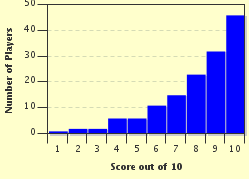Quiz Answer Key and Fun Facts
1. These delicious treats are prepared by adding the dough or batter to a hinged heating iron which imparts a pattern on the finished product. These are most commonly eaten as a breakfast food covered with toppings including sugar, chocolate spread, honey or maple syrup or as a dessert topped with ice-cream. Savory versions may be topped with various stews. So what are these treats that are especially popular in North America and Belgium?
2. This visually spectacular dessert consists of a thin pancake covered with a rich sauce of caramelized sugar and butter with a strong orange flavor arising from orange juice, zest and an orange-based liqueur such as Grand Marnier. It is then set on fire at the table! What is the name of this French treat?
3. Raggmunk, Swedish pancakes, are usually served with slices of bacon or roast pork and berries (often lingonberries or cranberries). Unlike most other pancakes, the batter for raggmunk includes a grated vegetable. Which starchy vegetable, a member of the Solanaceae family and famous for having 'eyes', is used in this recipe?
4. Dosas are fermented pancakes prepared from black lentils and rice batter, often served with a side dish of fruit chutney. From which region of the world do these healthy and tasty dishes come from?
5. A 'Crempog' is a regional variety of pancake from the United Kingdom. They are prepared from eggs, (salted) butter, self-raising flour, salt and milk. They are traditionally eaten as birthday treats and are buttered, served in a pile and eaten warm. From which country, which includes dragons and leeks amongst its national symbols, do crempogs come?
6. Blinis and blintzes are thin pancakes similar to crepes. They are very popular in eastern European countries and also in Jewish cuisine. One difference between them is that blinis are thicker than blintzes because they contain a 'leavening agent'. So how does a leavening agent, such as yeast, increase the volume of the batter and the thickness and softness of the cooked food?
7. Pikelets are small pancakes, made with milk, self-raising flour, eggs, and icing sugar. They are cooked in a frying pan and often served with jam and whipped cream. Which two countries use these cooking terms, eat pikelets and have a long running dispute over the origins of the dessert 'Pavlova'?
8. Injera is a yeast-leavened flatbread, traditionally made from teff flour. It is the national dish of Eritrea and Ethiopia with variations also popular in Yemen and Somalia. During the meal, pieces of injera are used to convey stews and salads to the mouth. What slightly unusual purpose does the injera also serve during the meal?
9. Okonomiyaki, meaning 'what you like' (okonomi) 'cooked or grilled' (yaki) are savory pancakes. The batter is made of flour, grated yam, water or dashi (broth), eggs and shredded cabbage. Other ingredients may include pork or bacon, green onions, shrimp vegetables and cheese. Which country, also renowned for careful preparation of fugu fish, tempura and miso soup, is the home of okonimiyaki?
10. In many traditions and cultures, especially those associated with Christianity, this particular day is famous for the consumption of pancakes, often lots of them! Also known as Mardi Gras, the feasting on this day precedes the start of the 40-day Lenten period leading up to Easter. So what is the name of this day of potential calorific excess?
Source: Author
MikeMaster99
This quiz was reviewed by FunTrivia editor
WesleyCrusher before going online.
Any errors found in FunTrivia content are routinely corrected through our feedback system.

